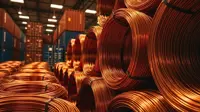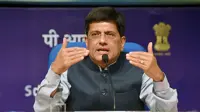Scientists from Centre for Nano and Soft Matter Sciences (CeNS), Bengaluru have a transparent shield for electromagnetic interference (EMI) by designing a metal mesh structure instead of continuous film on desired transparent substrates.
The invisible shield can be used in various military stealth applications and can cover electromagnetic wave emitter or absorber devices without compromising their aesthetics.
The Centre for Nano and Soft Matter Sciences (CeNS) is an autonomous institute of the Department of Science and Technology.
The CeNS team fabricated these transparent and flexible EMI shields made of metal meshes using the crack templating method via spray coating, which has been pioneered in their laboratory.
The team used a copper metal mesh on polyethylene terephthalate (PET) sheet as its substrate, which exhibited a visible transmittance (T), a parameter of visible transparency of about 85 per cent and sheet resistance (Rs) ~ 0.83 ohm per square. These transparent and flexible EMI shields made of metal mesh coatings on desired transparent substrate they have developed through their research published in the journal ‘Bulletin of Materials Science’ showed remarkably high values for total EMI shielding (SET), with the average value being ~ 41 dB over a wide spectral range of the Ku band (12 to 18 GHz).
Instead of continuous film of metal (Cu) coating on any transparent substrate (glass, PET) where transparency can be compromised, the CeNS team deposited metal mesh networks on the substrate, which covers only 7 per cent area of substate, unlike 100 per cent coverage of continuous film. This makes metal mesh transparent compare to continuous metal film. Metal mesh provides better electromagnetic shielding compared to same thickness of continuous metal film where transparency can be compromised.
This metal mesh can be created on any desired substrates such as acrylic, polycarbonate, glass, etc without compromising the conductivity of the electrodes.
Ashutosh K Singh, scientist at CeNS working on the project, said, “This invention has the potential to satisfy the huge demand for highly effective transparent and flexible EMI shields, which can cover electromagnetic wave emitter/absorber devices without compromising their aesthetics.”
These transparent EMI shields have been exhibited in various prestigious expos and conferences such as Bangalore INDIA NANO-2018 and 2020, ICONSAT-2018 and 2020, SPIE-2019, etc for dissemination and marketing purpose. The shields are available for onsite testing and validation purposes.
The team lead by G U Kulkarni, along with his co-workers from CeNS and industrial partner Hind High Vacuum (HHV) Pvt Ltd have set up a semi-automated production plant funded by DST-Nanomission in CeNS-Arkavathi campus for production of transparent conducting glasses which shows the potential for transparent EMI shields as well.






















